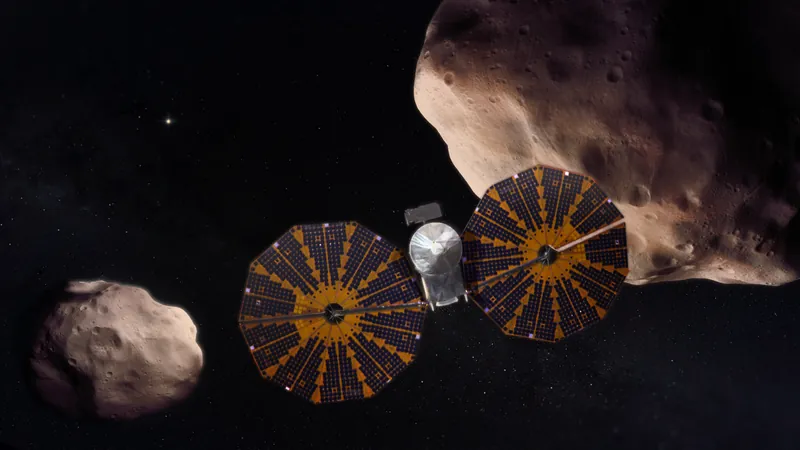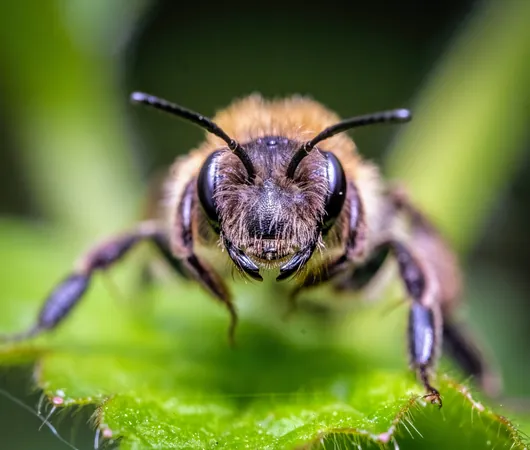
Lucy Mission on Course for a Potential New Asteroid Discovery!
2025-08-11
Author: Yu
Exciting Trajectory Adjustments Ahead for Lucy!
NASA's ambitious Lucy mission, already en route to explore Jupiter’s Trojan asteroids, may soon take a thrilling detour! Recent studies reveal that the spacecraft could perform a maneuver to visit an as-yet-undiscovered asteroid, adding a fascinating twist to its mission.
The Trojan Clouds: What to Expect?
Lucy is primarily set to explore the L4 Trojan cloud, with four of its five planned asteroid visits focused there. The mission also targets the intriguing Patroclus-Menoetius binary in the L5 grouping, a collection of asteroids trailing behind Jupiter. Impressively, Lucy will only sample a tiny fraction of the numerous asteroids believed to inhabit these regions.
Navigating an Intricate Cosmic Journey
The spacecraft's orbital journey is anything but simple. It will harness gravitational assists from Earth and the Sun to make its way to Jupiter's orbit twice. The latest research aims to calculate the energy and trajectory adjustments needed to nudge Lucy towards a smaller, potentially undiscovered asteroid without jeopardizing its primary mission.
Finding the Hidden Gems: Undiscovered Asteroids!
The challenge? Identifying which asteroid Lucy might approach. Although many larger asteroids in the L5 group are known, a treasure trove of smaller, undetected ones awaits discovery. Researchers are leveraging statistical models to pinpoint their positions, gearing up for a major observational campaign at the end of 2026.
Observational Opportunities to Seek New Targets
If leading telescopes like Subaru or the Vera Rubin Observatory focus on the likely asteroid-rich areas, they could discover candidates about 700 meters in diameter in just one night! Smaller targets, around 500 meters, may require a few nights of observation. However, the potential scientific discoveries are well worth the effort!
Course Correction: Timing is Everything!
Lucy’s mission team has calculated the optimal times for a course correction—around the third gravity assist from Earth or after proximity to the Patroclus binary. Each option offers unique advantages, but coordination with telescopic observations is crucial. Missing this window could mean losing out on a rare new discovery.
A Golden Opportunity for Science!
With the potential to visit new asteroids at a relatively low cost, the stakes are high. If the mission team secures observational time, they could unlock new scientific insights into the nature of asteroids. Until then, the space community watches closely, eager to see if Lucy can discover even more thrilling adventures in the depths of space!


 Brasil (PT)
Brasil (PT)
 Canada (EN)
Canada (EN)
 Chile (ES)
Chile (ES)
 Česko (CS)
Česko (CS)
 대한민국 (KO)
대한민국 (KO)
 España (ES)
España (ES)
 France (FR)
France (FR)
 Hong Kong (EN)
Hong Kong (EN)
 Italia (IT)
Italia (IT)
 日本 (JA)
日本 (JA)
 Magyarország (HU)
Magyarország (HU)
 Norge (NO)
Norge (NO)
 Polska (PL)
Polska (PL)
 Schweiz (DE)
Schweiz (DE)
 Singapore (EN)
Singapore (EN)
 Sverige (SV)
Sverige (SV)
 Suomi (FI)
Suomi (FI)
 Türkiye (TR)
Türkiye (TR)
 الإمارات العربية المتحدة (AR)
الإمارات العربية المتحدة (AR)